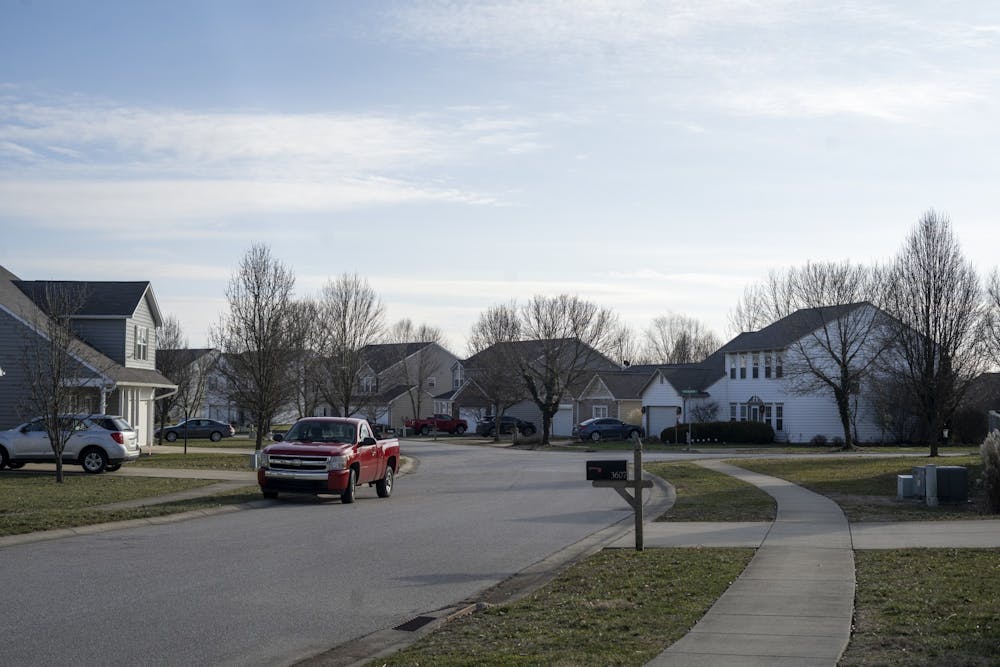The Bloomington City Council approved a series of proposals Wednesday to the Unified Development Ordinance, which governs what types of buildings can be built in certain parts of the city.
The months-long process of reviewing the UDO involves a variety of stakeholders. The city plan commission makes a series of recommendations, the city council approves those changes and the mayor signs the changes into law.
The city council took preliminary votes on these issues April 14. All nine members were present at both meetings.
Affordable housing
The city council unanimously passed an ordinance to incorporate a series of laid-back regulations for affordable housing initiatives into areas zoned by the city as residential urban. Examples of relaxed regulations for affordable housing projects include taller maximum building heights, eased requirements for how far back a building must be set from the edge of the property line and laid-back dimensional standards.
Previously, relaxed dimensional standards were only given in the UDO to affordable housing units in lots zoned as residential small, residential medium or residential large, leaving out the newly established residential urban district. Under the new changes, affordable housing projects in areas zoned as residential urban can now take advantage of those laid-back dimensional standards.
The goal of the new standards is to make it easier to build affordable housing units because developers do not have to conform to the normal, more strict zoning standards. The hope is the laid-back standards will increase the number of affordable housing units in the city.
Mayor John Hamilton expressed earlier this year in his State of the City address that creating more affordable housing was a priority for the city. This issue has received heightened attention after the city evicted people staying at Seminary Park in December.
Homeless shelters
The Bloomington City Council unanimously approved a proposal that will ease restrictions on the construction of homeless shelters. Homeless shelters are considered supportive housing under the UDO.
The old definition suggested supportive housing developments should have staff living on the premises or have exclusive facilities for medical purposes. Jacqueline Scanlan, a member of the city plan commission’s staff, said that requirement is not necessary for homeless shelters.
“The intent of this change is to align the definition with more realistic operation,” Scanlan said.
The city plan commission voted 8-0 to recommend the change earlier this year, according to city documents. Scanlan said members of the plan commission worked with advocates for unhoused residents and homeless shelters to assure these changes would support the mission of shelters to house residents experiencing homelessness.
Student housing
The council voted 9-0 to change some zoning requirements for student housing units. The new proposal restricts the size of a building. The city plan commission wrote in city documents the adjustment was recommended because it is a more appropriate size fit to the zoning district.
The changes decrease the square footage that could be covered by student housing units on the lot, unless the unit was a part of the city’s affordable housing initiative or the sustainable development initiative. Currently, student housing units can cover either 5,000, 10,000 or 20,000 square feet, depending on what zoning district the unit is located in. Under the new proposal, the allowed coverage would be cut in half in all zoning districts, unless the unit was under the affordable housing plan or the sustainable development initiative in which case original coverage rules would apply.
The allowed maximum height of student housing units was also decreased under the changes. In high-density residential areas, the maximum height for a student housing unit was previously 50 feet. The new changes lower buildings to 40 feet, unless the building is an affordable housing unit that earns additional height allowance.
Parking
The city council, in a 9-0 vote, approved two changes to parking regulations.
Under current rules, medical clinics in Bloomington can only have 3.3 parking spaces for every 1,000 square feet in the facility. The new changes increase that maximum to five parking spaces for every 1,000 square feet. A staffer from the city plan commission said the recommendation was made after discussions with medical clinics.
An amendment submitted by councilmember Steve Volan aimed to keep the maximum number of parking spaces at 3.3 per 1,000 square feet. Only Volan voted in favor of his amendment.
The new changes also set minimum dimensions for motorcycle parking spaces to a width of 3 feet and a depth of 6 feet.
Next steps
The council will consider a more controversial element of the UDO when they weigh whether to allow duplexes in areas currently zoned for single-family homes. The plan commission voted in favor of a plan to allow duplexes, but was met with significant opposition from residents. The council is set to consider that proposal April 28.
The full UDO map is also set to be discussed next week, setting up a potential final vote in early May.
UPDATE: This article has been updated to reflect new information from the Bloomington City Council meeting Wednesday, April 21.



